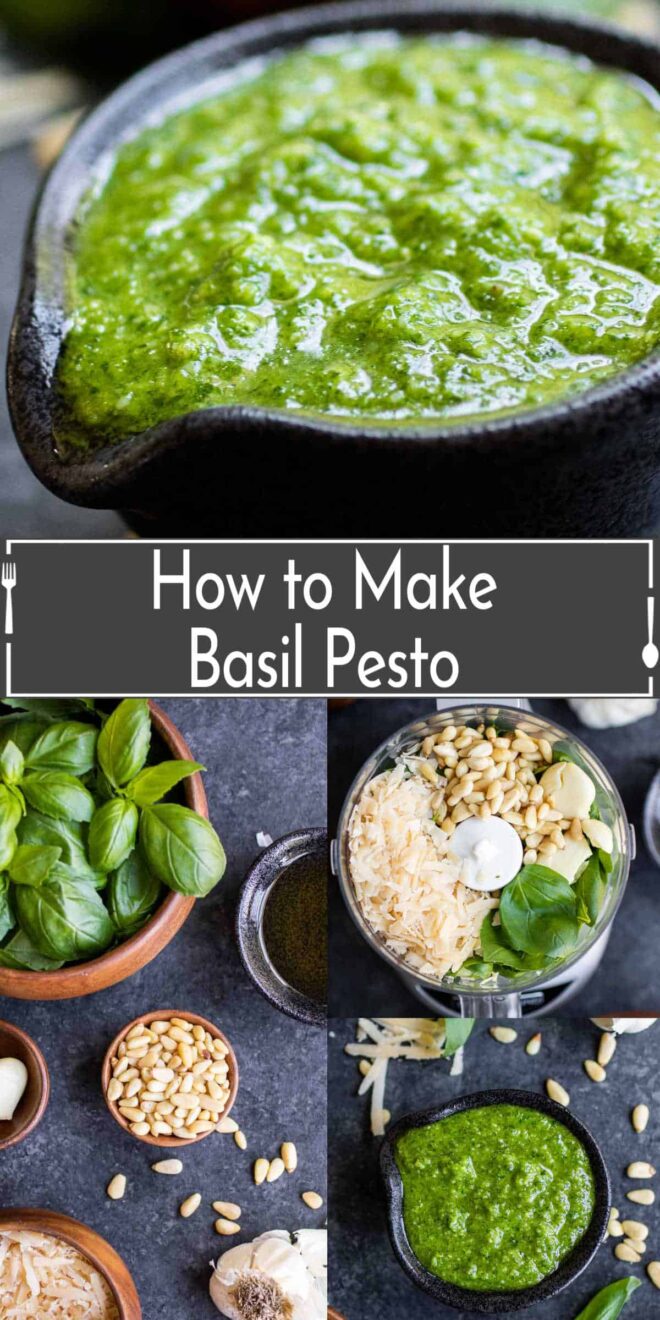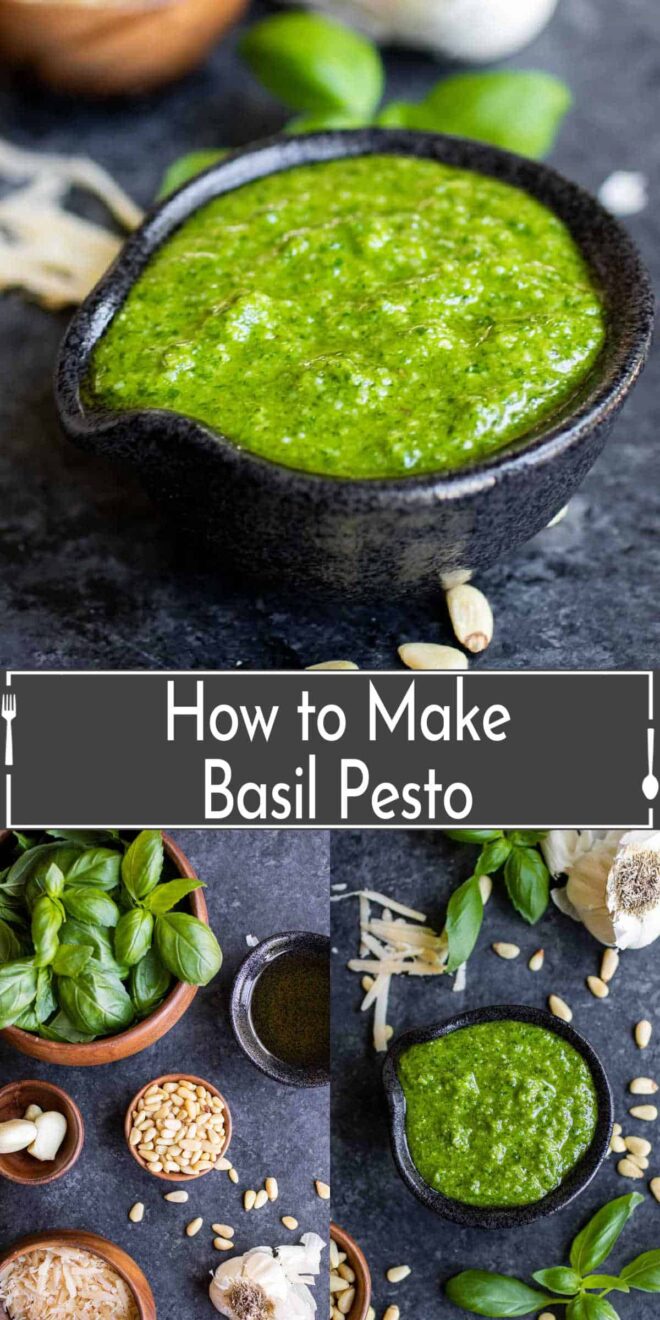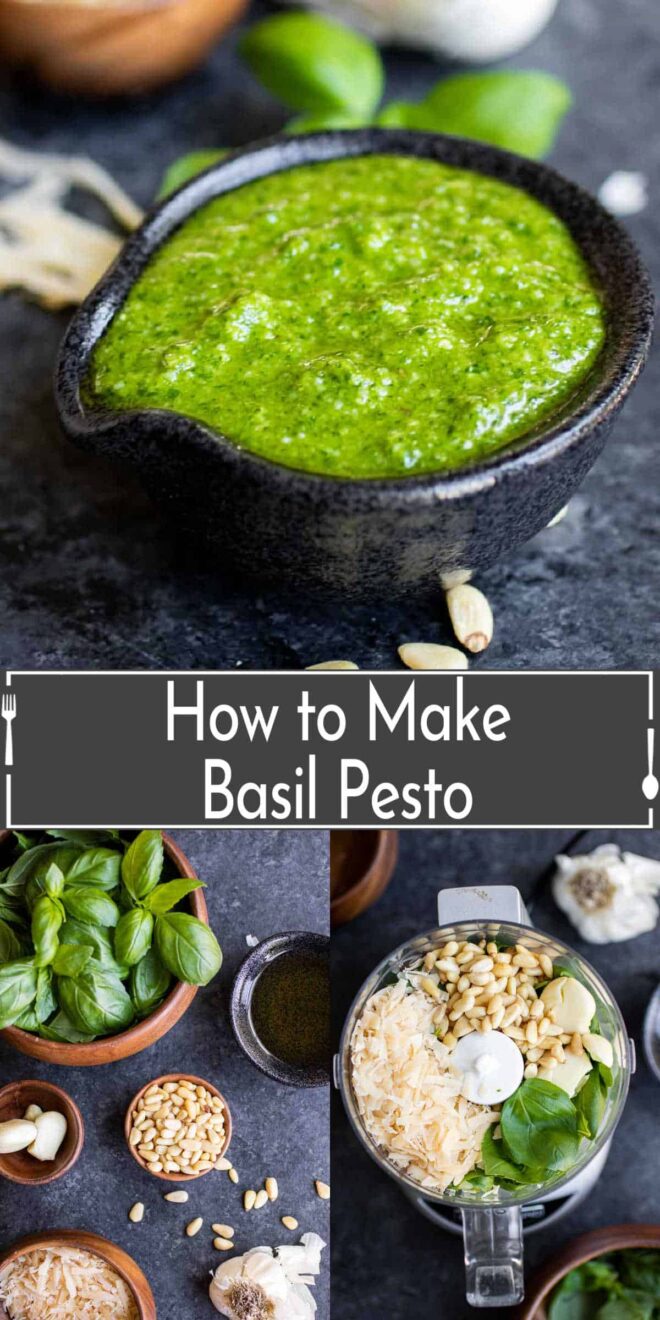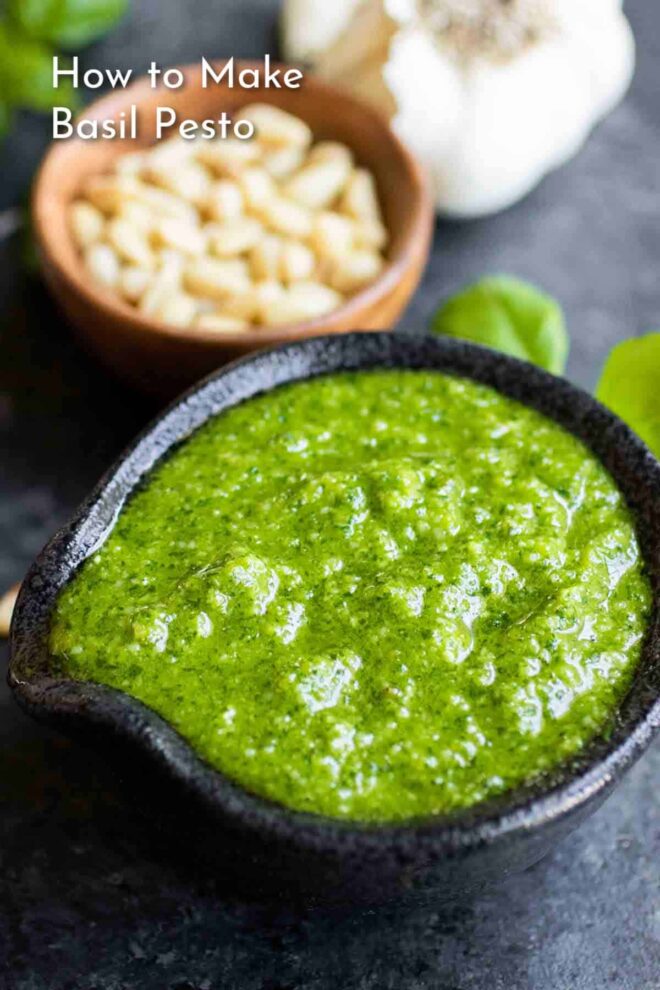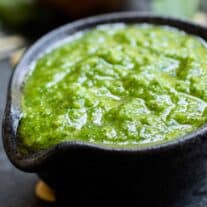How to Make Pesto Genovese (Basil Pesto)
We’re showing you how to Make Pesto Genovese with just 5 simple ingredients. This healthy basil pesto recipe is so easy to make and it’s the perfect sauce to elevate delicious weeknight dinners and amazing appetizers.
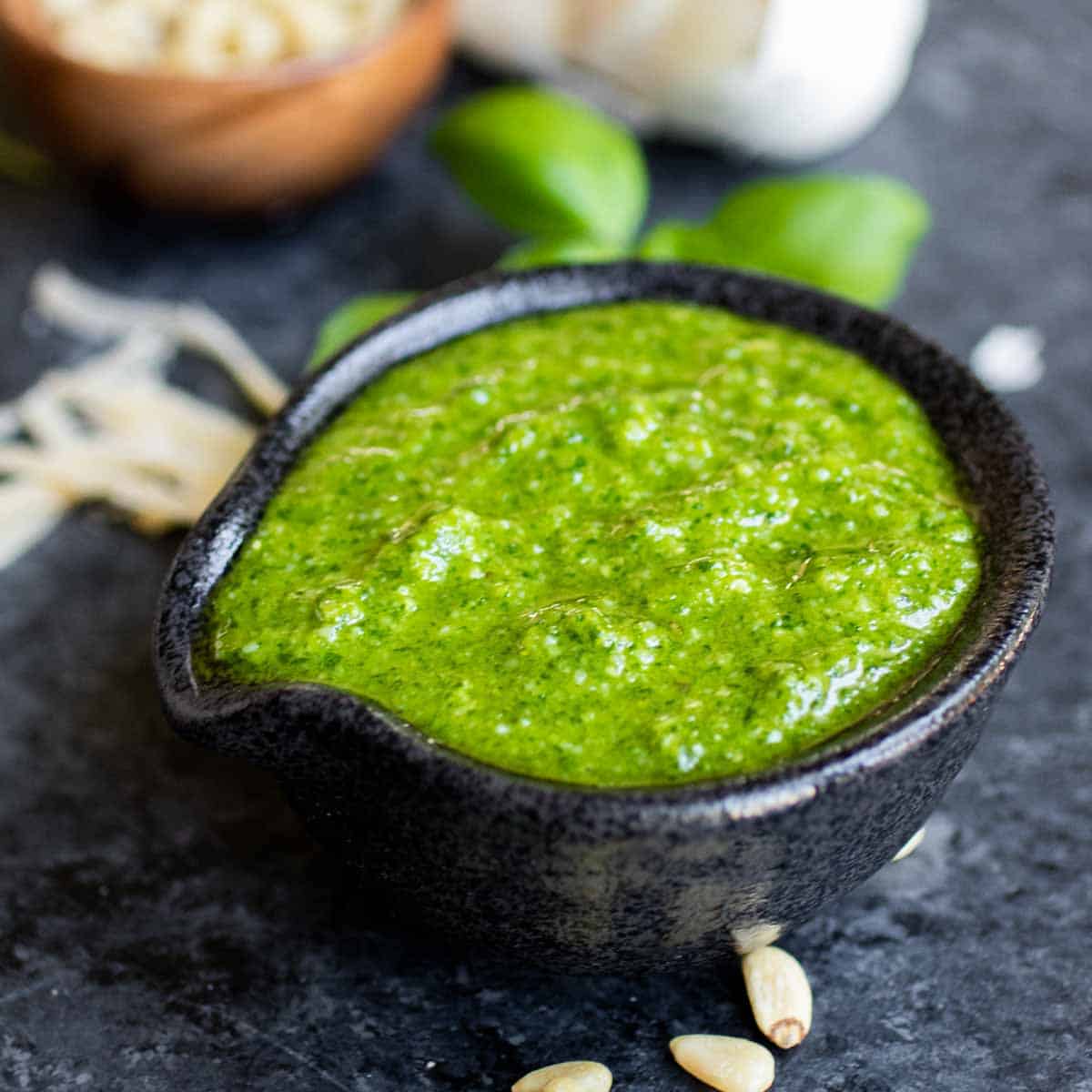
Everyone needs to know how to make basil pesto! It is a great addition to so many dishes from basil pesto pasta, and basil pesto chicken, to simple appetizers like my delicious Pesto Cream Cheese Spread.
Made with just 5 simple ingredients this bright green pesto sauce adds a bright, fresh flavor to any dish that it is used in. Make a batch and keep it in your refrigerator so you always have some on hand.
Table of contents
Note: This post may contain affiliate links. That means if you click on a link and make a purchase we may receive a small commission. Thank you!
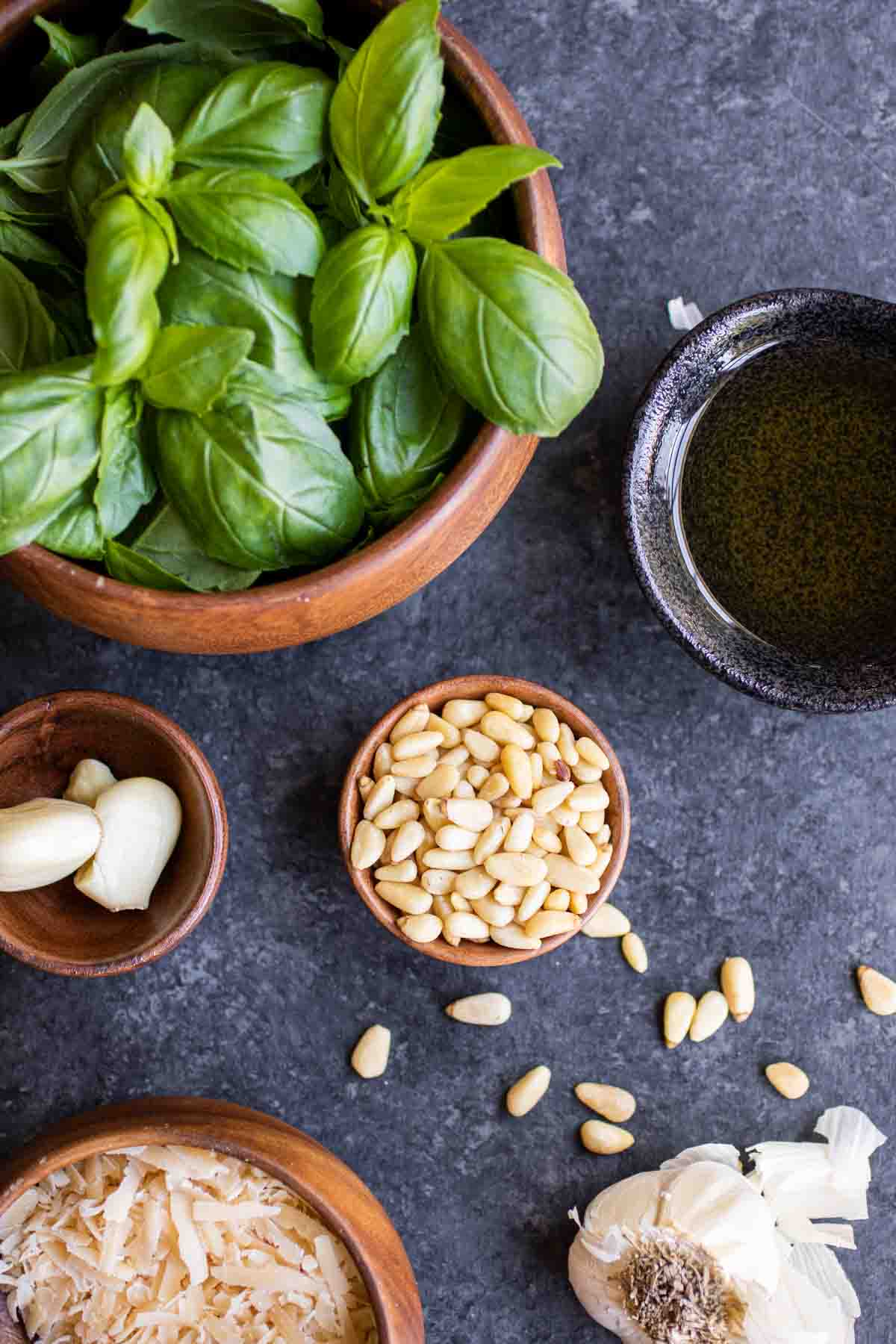
The key to a great homemade pesto is fresh, quality ingredients. There are only a few things that go into making basil pesto so each one needs to have as much flavor as possible.
Basil Pesto ingredients:
- Basil – Pesto Genovese is traditionally made with Genovese basil. In the United States, this is also called Sweet Basil. You cannot use dried basil for pesto.
- Olive Oil – Use the best quality olive oil you can. A better quality oil has a richer flavor that adds to the taste of the pesto.
- Parmesan Cheese – Use a fresh Parmesan cheese for pesto. It doesn’t have to Parmigiano-Reggiano (but if you have it use it!) but it should be a high quality Parmesan. Do not use the powdered Parmesan you find on grocery store shelves.
- Pine Nuts – Yum! I love pine nuts (also called pignoli) ! These pretty little nuts have a milk flavor and the oil in them adds to the texture of the pesto. If you don’t have pine nuts handy you can substitute with walnuts or almonds. The flavor will be slightly different but still delicious.
- Garlic – I think using fresh garlic is the best but I’ll admit sometimes I cheat and use that minced garlic that comes in a jar. Both work 🙂
What Can You Use Instead of Basil in Pesto?
Once you’ve mastered how to make basil pesto you can start getting creative. You can make other green pestos with baby spinach, artichoke hearts, arugula…Most of these still use a little basil in them to help balance them but they all have their own distinct flavor!
You can also make red pesto, or Pesto Rosso, using sun-dried tomatoes for a totally different flavor!
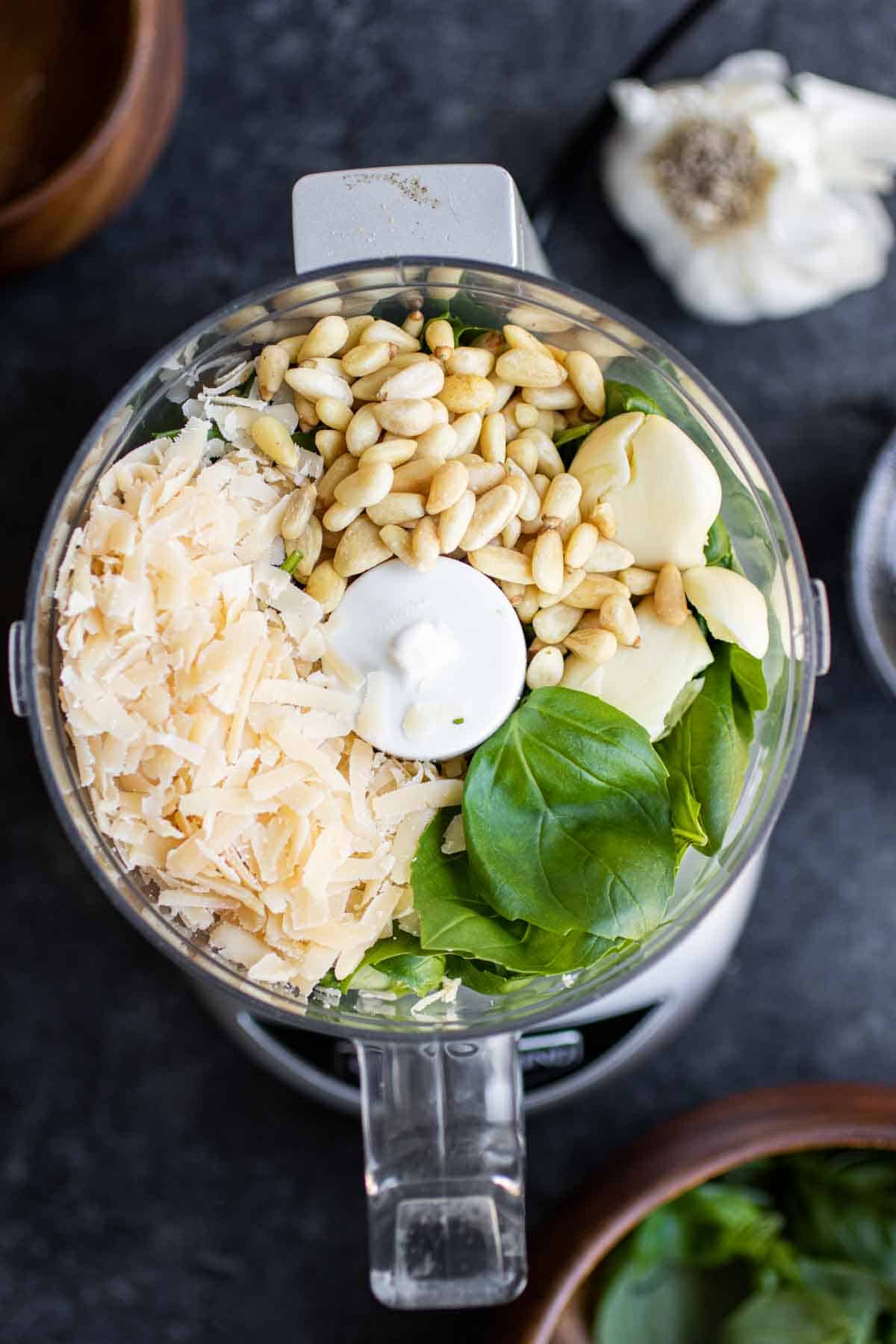
How to Make It
Now that we’ve explored the ingredients, let’s dive into the process of making Pesto Genovese. Traditionalists argue that the sauce should only be prepared using a pestle and mortar to preserve the flavors and texture. However, modern kitchens have adapted to the demands of convenience, allowing for the use of blenders or food processors without compromising the overall taste.
Here’s a step-by-step guide to crafting the perfect green pesto sauce:
- Gather the Ingredients: Begin by gathering a large bunch of fresh basil leaves, pine nuts, garlic cloves, Parmigiano Reggiano cheese, and extra-virgin olive oil. It is essential to use high-quality ingredients to achieve the best results.
- Toasting the Pine Nuts: Heat a small skillet over medium heat and add the pine nuts. Toast them gently, stirring frequently until they turn golden brown. Be cautious as they can burn quickly. Once toasted, set them aside to cool.
- Blending the Ingredients: In a blender or food processor, combine the basil leaves, toasted pine nuts, garlic cloves, and grated Parmigiano Reggiano cheese. Pulse the mixture a few times to break down the ingredients.
- Adding the Olive Oil: Slowly drizzle in the extra-virgin olive oil with the blender or food processor running. Continue blending until the sauce reaches a smooth and creamy consistency. Be mindful not to over blend, as it can affect the sauce’s texture.
- Seasoning to Taste: Give the sauce a taste and season with salt and pepper as desired. Remember that Parmigiano Reggiano already adds some saltiness, so make sure you add salt slowly so you don’t over-salt the sauce.
- Storing the Sauce: Transfer the Pesto Genovese to a clean jar or airtight container. To preserve its vibrant green color, cover the sauce with a thin layer of olive oil before sealing. It can be stored in the refrigerator for up to a week or frozen for longer shelf life.
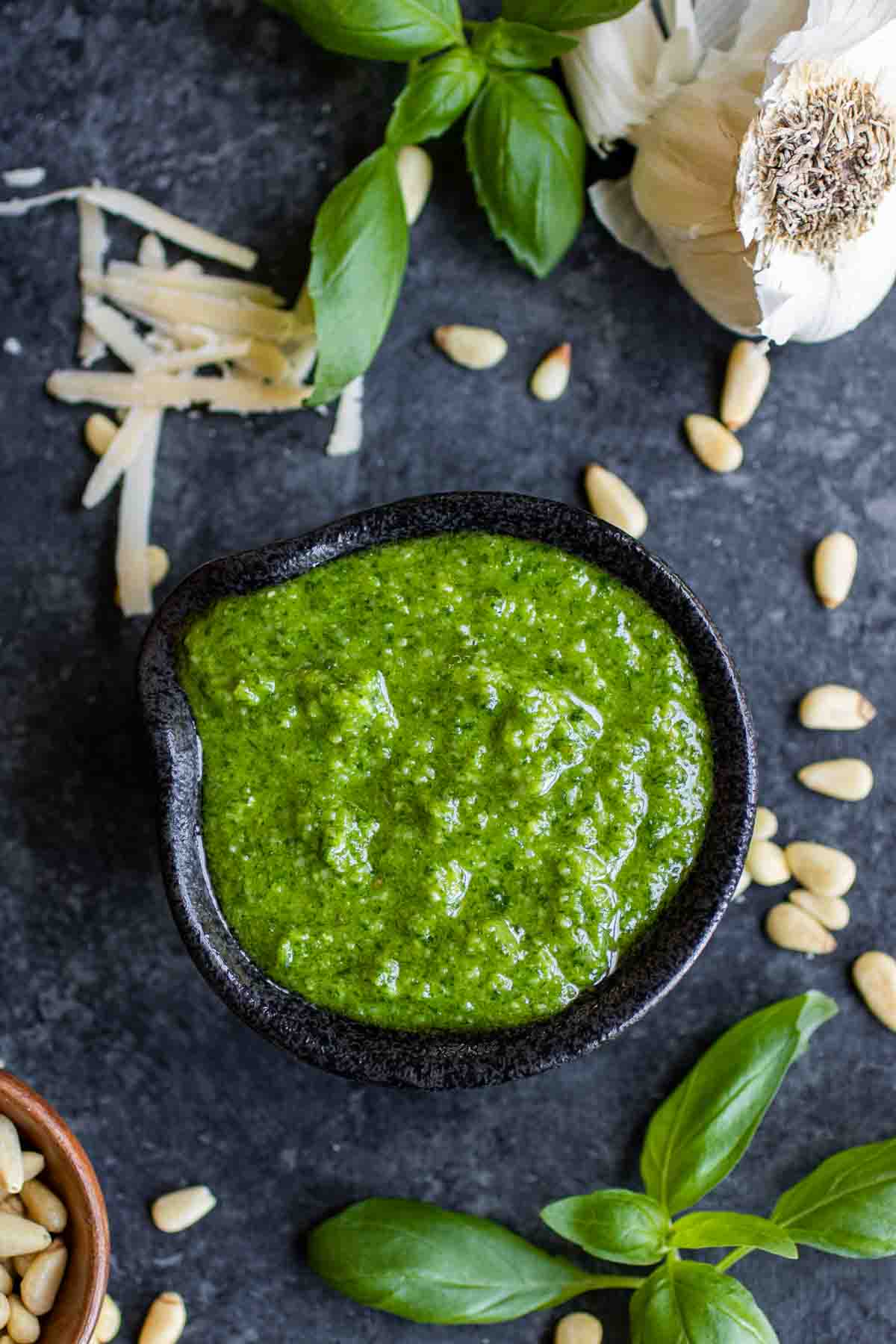
Frequently Asked Questions
While Genovese basil (known as sweet basil) is the traditional choice, you can experiment with other basil varieties, such as Thai basil or lemon basil, to add a unique twist to your sauce.
Yes, pine nuts are traditional but you can substitute pine nuts with walnuts, almonds, or even cashews. Each nut will impart a distinct flavor to the sauce.
If the sauce has oxidized and lost its vibrant green color, you can revive it by blanching a few basil leaves in boiling water for a few seconds, then plunging them into ice water. Blend the blanched leaves into the sauce to restore its green hue.
Yes, you can freeze Pesto Genovese for future use. Portion it into ice cube trays or small containers, drizzle a little olive oil on top, and freeze. Thaw it in the refrigerator when ready to use.
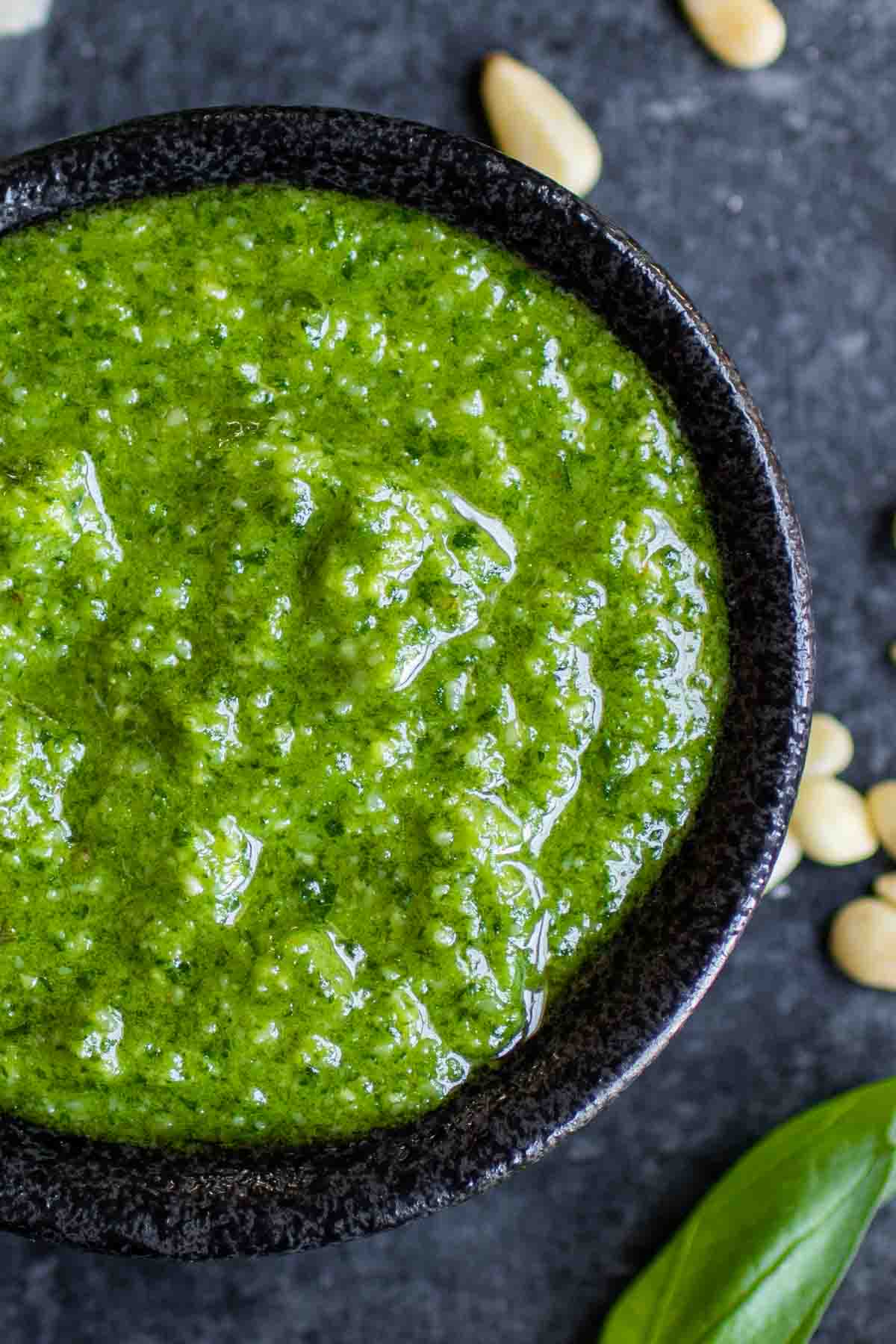
Uses for Basil Pesto
While Pesto Genovese is famously paired with pasta and used as a topping for pizzas, its versatility extends far beyond these classic combinations. Here are some creative ways to incorporate this flavorful sauce into your culinary repertoire:
- Sandwiches: Elevate your sandwiches by spreading a generous amount of basil pesto on your bread or rolls. It adds a burst of freshness and complexity to your favorite fillings.
- Salads: Use it as a dressing for your salads, particularly those with a Mediterranean twist. Its vibrant color and zesty flavors will invigorate your greens.
- Grilled Meats: Marinate your favorite cuts of meat, such as chicken or lamb, with green pesto before grilling. The herbaceous flavors will infuse the meat, resulting in a tantalizing dish.
- Vegetable Medley: Toss roasted or grilled vegetables with Pesto Genovese for an instant flavor upgrade. The sauce complements the natural sweetness of vegetables like zucchini, bell peppers, and cherry tomatoes.
- Seafood Delights: It pairs exceptionally well with seafood. Use it as a sauce for grilled shrimp, toss it with cooked mussels, or even drizzle it over a fresh piece of grilled fish.
- Gourmet Dips: Prepare a delightful and unconventional dip by mixing Pesto Genovese with creamy ingredients like Greek yogurt or sour cream or layer it with Pesto Rosso and cream cheese for this delicious cheese spread. Serve it with vegetable crudités or crusty bread for a crowd-pleasing appetizer.
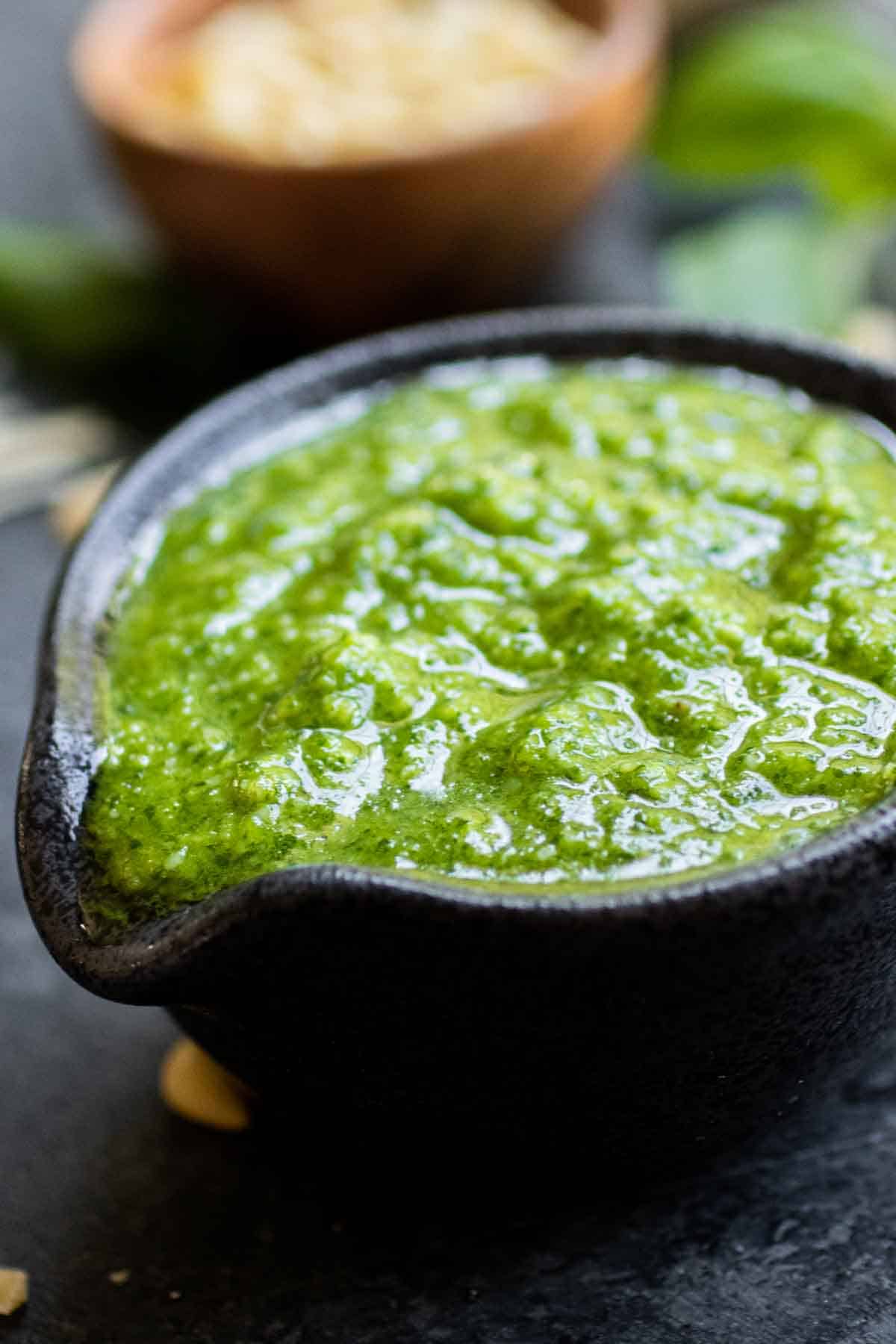
How to Store It
Refrigerator Storage Instructions:
- Transfer the Pesto Genovese to a clean, airtight container.
- Ensure the sauce is tightly sealed to prevent air from entering.
- Place the container in the refrigerator.
- Store the Pesto Genovese in the refrigerator for up to one week.
Freezer Storage Instructions:
- Portion the Pesto Genovese into small, freezer-safe containers or ice cube trays.
- Leave a little space at the top of each container or ice cube compartment to allow for expansion.
- Drizzle a thin layer of olive oil over the top of the sauce to help preserve its color and texture.
- Seal the containers tightly or cover the ice cube trays with plastic wrap.
- Place the containers or ice cube trays in the freezer.
- Store the Pesto Genovese in the freezer for up to three months.
When you’re ready to use the frozen Pesto Genovese, simply thaw it in the refrigerator overnight or defrost it in the microwave using the defrost setting. Once thawed, give it a stir and use it as desired. Enjoy the delicious flavors of Pesto Genovese even when stored for future use!
Like this recipe?
Make sure to follow us on Instagram and Pinterest for more recipes like this.
Pesto Genovese (Basil Pesto)
Ingredients
- 2 cups Fresh Basil, packed firmly
- 1/2 cup Parmesan Cheese
- 1/4 cup Pine Nuts
- 1-2 cloves Garlic
- 2/3 cup Olive Oil
- Salt to taste
Instructions
- Heat a small skillet over medium heat and add the pine nuts. Toast them gently, stirring frequently until they turn golden brown. Be cautious as they can burn quickly. Once toasted, set them aside to cool.
- Ina blender or food processor, combine the basil leaves, toasted pine nuts, garlic cloves, and grated Parmigiano Reggiano cheese. Pulse the mixture a few times to break down the ingredients.
- Slowly drizzle in the extra-virgin olive oil with the blender or food processor running. Continue blending until the sauce reaches a smooth and creamy consistency. Be mindful not to over-blend, as it can affect the sauce's texture.
- Transfer the Pesto Genovese to a clean jar or airtight container. To preserve itsvibrant green color, cover the sauce with a thin layer of olive oil beforesealing. It can be stored in the refrigerator for up to a week or frozen forlonger shelf life.
Nutrition


